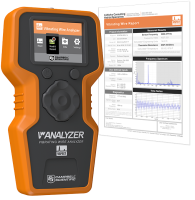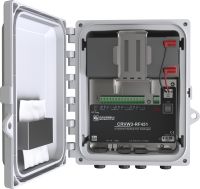The Campbell Scientific Blog Your source for useful how-to information and helpful expert advice
Displaying 1 - 8 of 8 articles tagged with: VSPECT
How to Achieve Unmatched Vibrating Wire Speeds
Author: Michael Adams | Last Updated: 06/04/2024 | Comments: 0
In today's fast-paced world, accurate and rapid data acquisition is crucial. You can meet this critical need by capturing your data at unprecedented speeds of up to 200 times per second. I’ll explain how in this blog article. Pioneering Data Acquisition I’m excited to say that,... read moreA Deeper Look: Our Role in the Hole
Author: Michael Adams | Last Updated: 04/23/2024 | Comments: 0
Have you read the South Dakota: Rock Stability in Large Underground Excavation case study? It’s a short and interesting read, so check it out if you haven’t already. In this blog article, we’ll take a deeper look at Campbell Scientific’s role in a large-cavern, hard-rock... read moreA Closer Look: Resolving Dam Data Discrepancies
Author: Eric Schmidt | Last Updated: 03/05/2024 | Comments: 0
Did you read our Southwest: Solving the Mystery of Erroneous Dam Monitoring Data case study? Want to get some more details? In this article, we’re going to take a closer look at that case study. If you haven’t read the case study yet, please do... read more5 Things a VWAnalyzer Can Do for You
Author: Jacqalyn Maughan | Last Updated: 08/29/2023 | Comments: 0
You may not realize just how helpful our handheld instrumentation can be—especially when it makes it easy for you to test your vibrating wire sensors, saving you time and money if a failed sensor is identified prior to installation. Let’s dive deeper into the five... read moreGet the Most out of VSPECT®
Author: Jacqalyn Maughan | Last Updated: 08/22/2023 | Comments: 3
Understanding the benefits of VSPECT® will help ensure you are maximizing your benefits when using this technology. In this article, we’ll explore this topic to provide you with a better measurement experience. Why do Campbell Scientific monitoring platforms give me extra vibrating wire data? Have you ever... read moreUse VSPECT® to Verify: Bad Sensors or Bad Data?
Author: Jacqalyn Maughan | Last Updated: 04/06/2023 | Comments: 0
Have you ever thought your bad vibrating wire sensor measurements were caused by erratic or erroneous data? You may be surprised to learn that data issues may not be the cause. If you are using a data-acquisition system other than one of the Campbell Scientific... read moreHow to Obtain Vibrating Wire Measurements in Environments with High Electromagnetic Noise
Author: Timothy Jeppsen | Last Updated: 10/07/2020 | Comments: 0
In 1997, I had my first introduction to using vibrating wire piezometers to measure groundwater fluctuations. A large engineering firm was monitoring water level to ensure that construction of a large pipeline through the San Bernardino Mountains was not intruding on the groundwater. I was... read moreWhy Should You Use a Vibrating Wire Data Logger?
Author: Robin Deissinger | Last Updated: 02/14/2018 | Comments: 0
In this short interview, Josh Brown, Market Product Manager of the Infrastructure Group, shares some of the benefits of using a vibrating wire data logger, such as the CRVW3 3-Channel Vibrating Wire Datalogger. Josh was interviewed by Robin Deissinger, the blog editor. Interview Q&A What is... read more


















